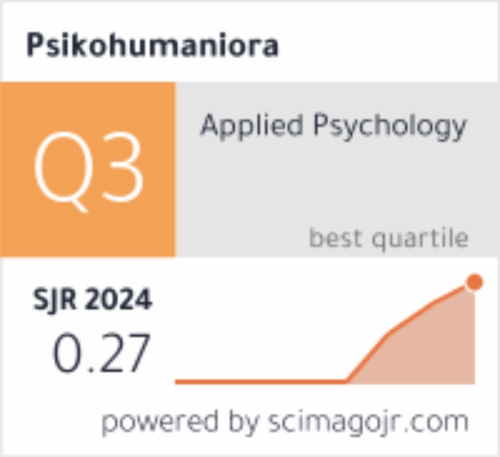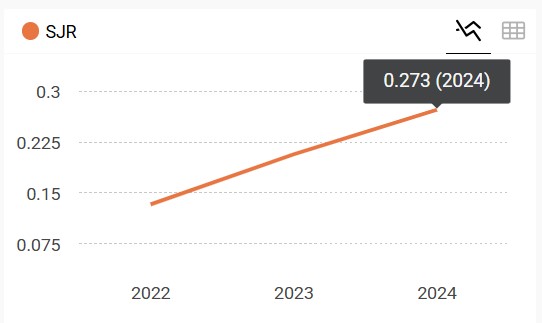Strategi Penanganan Konflik pada Proses Penggabungan Perguruan Tinggi Swasta
DOI:
https://doi.org/10.21580/pjpp.v3i1.970Keywords:
merging, higher education, conflict management strategyAbstract
Abstract: Merger of academies to be one university is a way to perform effectivity and efficiency of the foundation as the organizer of education. The process of conveying the idea will face challenges and conflicts such as opposition to the idea of merging universities. Conflict can be a functional and dysfunctional role in the organization, depending on how the organization is able to manage the conflict and use appropriate conflict management strategies. The research was conducted at one of the private universities in Bandung that has combined four academies to form the University. This research uses a qualitative approach case study. The results of this study indicate that the foundation has an important role during the merging process, the foundation selects direct leaders (Rector of the University) from external parties to facilitate the process of forming a new culture, then the Foundation manages the conflict using a compromise strategy and collaboration to all academic communities so that conflicts arise functional role and improve post-merge University performance.
Abstrak: Penggabungan sekolah tinggi menjadi universitas adalah salah satu cara untuk melakukan efektifitas dan efisiensi yayasan sebagai penyelenggara pendidikan. Proses menyampaikan ide akan menghadapi tantangan dan konflik seperti oposisi terhadap gagasan menggabungkan universitas. Konflik dapat berperan fungsional dan disfungsional dalam organisasi, tergantung pada bagaimana organisasi mampu mengelola konflik dan menggunakan strategi manajemen konflik yang tepat. Penelitian ini dilakukan di salah satu universitas swasta di Bandung yang telah menggabungkan empat sekolah tinggi untuk membentuk universitas. Penelitian ini menggunakan pendekatan kualitatif case study. Hasil penelitian ini menunjukkan bahwa yayasan memiliki peran penting selama proses penggabungan, yayasan memilih langsung pemimpin (Rektor Universitas) dari pihak eksternal untuk memfasilitasi proses pembentukan budaya baru, kemudian Yayasan mengelola konflik menggunakan strategi kompromi dan kolaborasi untuk semua komunitas akademis sehingga konflik muncul peran fungsional dan meningkatkan kinerja universitas pasca-penggabungan.
Downloads
References
A. Jehn, K., & Bendersky, C. (2003). Intragroup conflict in organizations: A contingency perspective on the conflict-outcome relationship. Research in Organizational Behavior, 25, 187–242. Retrived from https://www.sciencedirect.com/science/article/pii/ S019130850325005X?via%3Dihub
Blake, R. R., & Mouton, J. S. (1964). The managerial grid. Houston: Gulf.
Effendi, S. (2003). Pengelolaan Perguuran Tinggi Menghadapi Tantangan Global. In Seminar Nasional Majelis Rektor Indonesai (pp. 1–12). Makassar.
Eisenhardt, K. M., Kahwajy, J. L., & Bourgeois, L. J. (1997). Conflict and strategic choice: How top management teams disagree, 39(2), 42–62.
Grant, R. M. (2010). Contemporary Strategy Analysis: Concepts, Techniques, Applications. USA: Blackwell.
Jehn, K. A. (1995). A Multimethod Examination of the Benefits and Detriments of Intragroup Conflict. Administrative Science Quarterly, 40(2), 256–282. https://doi.org/ 10.2307/2393638
Kotter, J. P., & Schlesinger, L. A. (2008). Choosing Strategies for Change - HBR.org. Harvard Business Review, July-Augu, 1–10. https://doi.org/Article
L. Ruble, T., & Thomas, K. W. (1976). Support for a two-dimensional model of conflict behavior. Organizational Behavior and Human Performance, 16(1), 143–155. https://doi.org/ 10.1016/0030-5073(76)90010-6
Luthans, F., Rubach, M. J., & Marsnik, P. (1995). Going beyond total quality: The characteristics, techniques, and measures of learning organizations. International Journal of Organizational Analysis, 3(1), 24–44.
Marks, M. A., Mathieu, J. E., & Zaccaro, S. J. (2001). A Temporally Based Framework and Taxonomy of Team Processes. The Academy of Management Review, 26(3), 356–376. https://doi.org/10.2307/259182
Mathieu, J. E., & Schulze, W. (2006). The Influence of Team Knowledge and Formal Plans on Episodic Team Process-Performance Relationships. The Academy of Management Journal, 49(3), 605–619. https://doi.org/10.2307/20159784
Mitroff, I. (1997). Smart thinking for crazy times: the art of solving the right problems. San Fransisco: Berrett-Koehler Publishers.
Pascale, R. T. (1990). Managing on the edge: How the smartest companies use conflict to stay ahead. New York: Simon and Schuler.
Pelled, L. H., Eisenhardt, K. M., & Xin, K. R. (1999). Exploring the black box: An analysis of work group diversity, conflict and performance. Administrative Science Quarterly, 44(1), 1–28. https://doi.org/doi.org/10.2307/2667029
Pruitt, D. G. (1983). Strategic Choice in Negotiation. American Behavioral Scientist, 27(2), 167–194. https://doi.org/10.1177/000276483027002005
Rahim, M. A. (2001). Managing conflict in organizations (3 ed.). Westport, CT: Quorum Books.
Rahim, M. A. (2002). Toward a theory of managing organizational conflict. SSRN Electronic Journal, 13(3), 206–235. https://doi.org/10.2139/ssrn.437684
Rahim, M. A., & Bonoma, T. V. (1979). Managing organizational conflict: A model for diagnosis and intervention. Psychological Reports, 44(3), 1323–1344. https://doi.org/ 10.2466/pr0.1979.44.3c.1323
Ravenscraft, D. J., & Scherer, F. M. (1989). The profitability of mergers. International Journal of Industrial Organization, 7(1), 101–116.
Robbins, S. P. (1978). “Conflict management” and “conflict resolution” are not synonymous terms. California Management Review, 21(2), 67–75. https://doi.org/10.2307/41164809
Robbins, S. P., & Judge, T. A. (2015). Perilaku organisasi (Organizational behavior) (16 ed.). Jakarta: McGraw Hill & Salemba Empat.
Salmi, J. (2009). The Challenge of establishing world-class universities. directions in development: human development (Vol. 3). Washington DC.: The International Bank for Reconstruction and Development / The World Bank. https://doi.org/10.1596/978-0-8213-7865-6
Senge, P. M. (1990). The fifth discipline: The art and practice of the learning organization. New York: Doubleday.
Senge, P. M., Kleiner, A., Roberts, C., Ross, R. B., & Smith, B. J. (1994). The fifth discipline fieldbook. New York: Doubleday.
Shelton, L. M. (1988). Strategic business fits and corporate acquisition: Empirical evidence. Strategic Management Journal, 9(3), 279–287. https://doi.org/10.1002/ smj.4250090307
Singh, H., & Montgomery, C. A. (1987). Corporate acquisition strategies and economic performance. Strategic Management Journal, 8(4), 377–386. https://www.jstor.org/ stable/2486020
Syakur, M. A. (2018). Berkaca dari China, Menristekdikti akan merger perguruan tinggi swasta. Diakses 25 Februari 2018, dari https://www.hidayatullah.com/berita/ nasional/read/2018/01/05/132235/berkaca-dari-china-menristekdikti-akan-merger-perguruan-tinggi-swasta.html
Thomas, K. W. (1976). Conflict and conflict management. In M. D. Dunnette (Ed.), Handbbok in industrial and organizational psychology (pp. 889–935). Chicago: Chicago: Rand McNally.
Thomas, K. W. (1992). Conflict and conflict management: Reflections and update. Journal of Organizational Behavior, 13(3), 265–274.
Tjosvold, D. (1991). Team organization: An enduring competitive advantage. New Jersey: John Wiley & Sons Inc.
Undang-Undang RI no 12 Tahun 2012 tentang Pendidikan Tinggi. https://unnes.ac.id/wp-content/uploads/uu-12-2012.pdf. Diakses tanggal 30 Juli 2018.
Vliert, E. Van de, & Kabanoff, B. (1990). Toward theory-based measures of conflict management. The Academy of Management Journal, 33(1), 199–209. https://doi.org/ 10.2307/256359
Wall, J. A., & Callister, R. R. (1995). Conflict and Its Management. Journal of Management, 21(3), 515–558. https://doi.org/10.1177/014920639502100306
Yin, R. K. (2015). Qualitative Research from Start to Finish. New York: Guilford Publications.
Downloads
Published
How to Cite
Issue
Section
License
The copyright of the accepted article shall be assigned to the publisher of the journal. The intended copyright includes the right to publish the article in various forms (including reprints). The journal maintains the publishing rights to published articles.
In line with the license, authors and any users (readers and other researchers) are allowed to share and adapt the material only for non-commercial purposes. In addition, the material must be given appropriate credit, provided with a link to the license, and indicated if changes were made. If authors remix, transform, or build upon the material, authors must distribute their contributions under the same license as the original.




